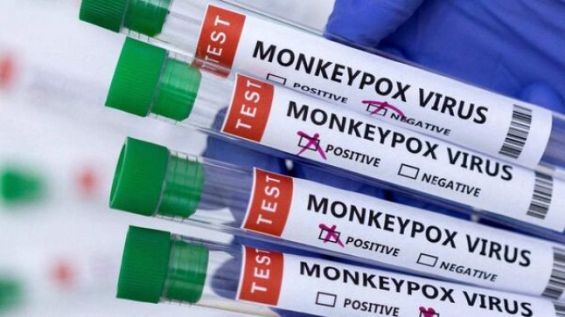On Wednesday, the World Health Organization (WHO) declared a public health emergency due to the rise in cases of simian smallpox (mpox) and the worsening epidemic in several African countries. «The current upsurge», as well as «the spread of a new sexually transmitted strain of the virus responsible for the disease», constitutes «an emergency, not only for Africa, but for the whole world», insisted Professor Dimie Ogoina, Chairman of the Emergency Committee. «Originating in Africa, mpox was neglected there before causing a global epidemic in 2022. We must now act decisively to prevent history from repeating itself», he stressed.
In addition to the need for mobilization among states, this situation also requires individual vigilance in terms of prevention. The situation is particularly concerning as this resurgence has been observed over several months, «even outside endemic countries in Central and West Africa, known to harbor this virus», Dr. Tayeb Hamdi told Yabiladi.
«We also found that this virus mutates more rapidly than other strains. The one identified in 2022 practically only affected cases of homosexual relations. Nowadays, the virus mutates not only in cases of heterosexual relations but also through gathering places such as schools, among children, families…», warns the specialist.
Greater vigilance on preventive measures
Dr. Hamdi points out that «it is no longer just sexual intercourse that causes infection, but also contact between the skin of an infected person and the mucous membranes of a healthy person, close contact, contact with infected surfaces and objects...». «We are therefore facing new modes of transmission, which we have not yet fully mastered but which we know facilitate infection and make it more rapid», insists the doctor.
Another cause for concern, according to the specialist, is that the strain involved in the public health emergency «is more virulent than the others (3%)». Among patients who develop severe forms, «there are 10% deaths among children and 5% among adults». Until now, this virus has particularly affected populations living in forests or in very remote rural areas. Now, «this new strain is also making its way into towns and cities, via airports and public transport», warns Dr. Hamdi.
Without urgent action, «this combination, which facilitates transmission, is likely to exacerbate infections worldwide», hence the priority, according to the doctor, of addressing it in areas of initial emergence. Given the rapid spread of the disease, basic hygiene rules remain imperative, such as regular hand-washing with soap and water, and the use of hydroalcoholic gel. The UN also recommends «avoiding all contact with sick people, remains, or contaminated surfaces, as well as handling or eating the meat of sick animals».
So far, known strains have been located in four Central and West African countries. But today, «there are 15, including those that have never been endemic», Dr. Hamdi recalls. With a case-fatality rate of 3% and rapid spread, it's important to recognize the seriousness of the virus and its complications, including death in severe cases. «This is indeed a serious disease, and if the spread and mutations continue, we'll be facing a real public health problem», warns Dr. Hamdi.
Yet simian smallpox is not a new infection. In 1958, the virus was discovered in a laboratory in Denmark, on monkeys imported from Africa and used as research subjects. The first human case was diagnosed in 1970 in the Congo. In 2022, the transmission of a new strain through mainly sexual routes was identified. A few months ago, in 2024, another form was discovered with higher virality.
International response requires solidarity
In this context, the public health emergency means that the alert must be extended to countries that have not recorded any cases of mpox but are at risk of importing the virus. «This also means that governments must allocate the necessary funds, human resources, vaccines, medicines, and tests to the African countries concerned to halt the spread», explains Dr. Tayeb Hamdi.
«Poor countries and regions in Africa that do not have the capacity to implement this series of measures, including sanitary isolation, diagnostics, tests, and imperative care, must be supported in this process. Otherwise, infections are likely to increase exponentially worldwide».
Like other countries affected by the global alert, Morocco is at risk of importing cases that could spread the virus within the country. In response, «it is important to raise awareness among the population and healthcare professionals, in addition to monitoring and surveillance work, compliance with health protocols, and cooperation with other countries in a spirit of international solidarity to stop the disease and reverse it where it has emerged», the doctor reminds us. «The risk is present, as it is everywhere else, and the measures to be taken therefore apply to everyone», he stresses.
Although human smallpox was eradicated in 1980, «vaccines have been stockpiled in wealthy countries, mainly to vaccinate healthcare professionals, laboratory researchers, or those working in high-risk environments». In 2022, their formula was used against monkeypox, successfully in 85% of cases. «These convincing results have enabled these countries to halt the spread of the new form of smallpox, but Africa has not been able to benefit from them, which has not helped to limit infections on our continent», adds Dr. Tayeb Hamdi.
For now, antiviral drugs are being used, and others are being tested, with a view to their possible availability in the coming weeks and months. This underscores the need for international mobilization and particular attention to be paid to the worst-affected areas of the continent.





 chargement...
chargement...













